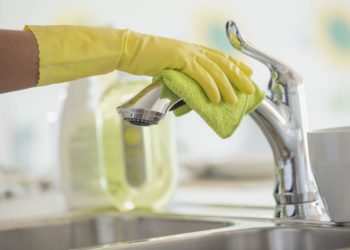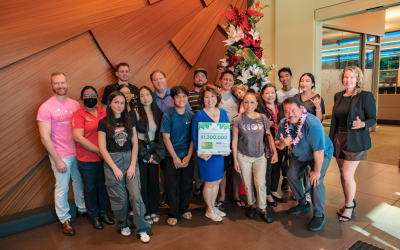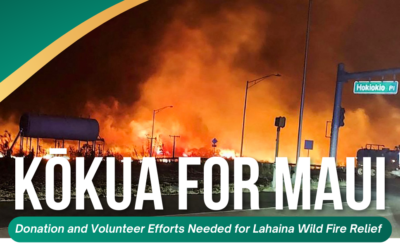A frequent area of confusion in knowledge and practice is proper towel usage. Sanitizing cloths are frequently misused. Here are a few guidelines.
Cloths used for sanitizing are to be kept in your sanitizing bucket. The sanitizing buckets are usually the red buckets that state that they for sanitizing. Other buckets can be used, but they should be clearly marked as to what they are. The chemical typically used is a Quat, with the ppm in the range of 150-400. Use room temperature water, and change every 4 hours, or when the water is murky and with debris. Food Contact surfaces should be sanitized in between working with different foods, and at least every 4 hours if working with the same foods. Lastly, if working with raw foods, then cooked, change the sanitizer water and cloths.
Squeeze out the water from the cloth, and wipe down the cleaned food contact area. Allow to air dry before placing new items on the surface. The cloth gets returned to the bucket – rinse the cloth if it is heavily soiled. These cloths are not to be stored on the cutting board or the counter – in the bucket only. The bucket is not to be stored on the floor or in an area where the solution can splash onto foods. The best place is on a shelf under the workstation.
Side towels for handling hot items may be kept on the side of the work area, and only used for hot items, no wiping down of surfaces. If they get wet or have food debris, they easily spread those bacteria’s we are trying to avoid, they need to be stored in the sanitizer bucket, and use a new dry towel as a side towel.
What about wiping glasses and silverware of fingerprints? Once these items have been washed and allowed to dry, they may be wiped with a clean DRY microfiber cloth.
While eating out recently, I saw a server keep a wiping towel in her back pocket. I don’t know whether she was wiping or carrying hot dishes, but the inside of the pocket cannot be properly sanitized. It should be tucked over the apron string. A personal pet peeve is when I see cloths and check books tucked INSIDE the pants at the back – the yuck factor is pretty high when I see that.
To learn more detail about this and other Food Safety procedures, or to set up an independent discounted audit of your facility, please contact Peter Bellisario of PeterB Food Safety Audits at peterb101@aol.com or (808)491-7766.




0 Comments